 Colmar is one of the most beautiful towns in Alsace. It is lined with picturesque timber frame houses steeped in history.
Colmar is one of the most beautiful towns in Alsace. It is lined with picturesque timber frame houses steeped in history.  The town is also the birthplace of several artists including Martin Schongauer (1445-91) whose altarpieces and engravings were admired by Dürer and Venetian artists of the Renaissance, and Auguste Bartholdi (1834-1904), best remembered for the Statue of Liberty.
The town is also the birthplace of several artists including Martin Schongauer (1445-91) whose altarpieces and engravings were admired by Dürer and Venetian artists of the Renaissance, and Auguste Bartholdi (1834-1904), best remembered for the Statue of Liberty. 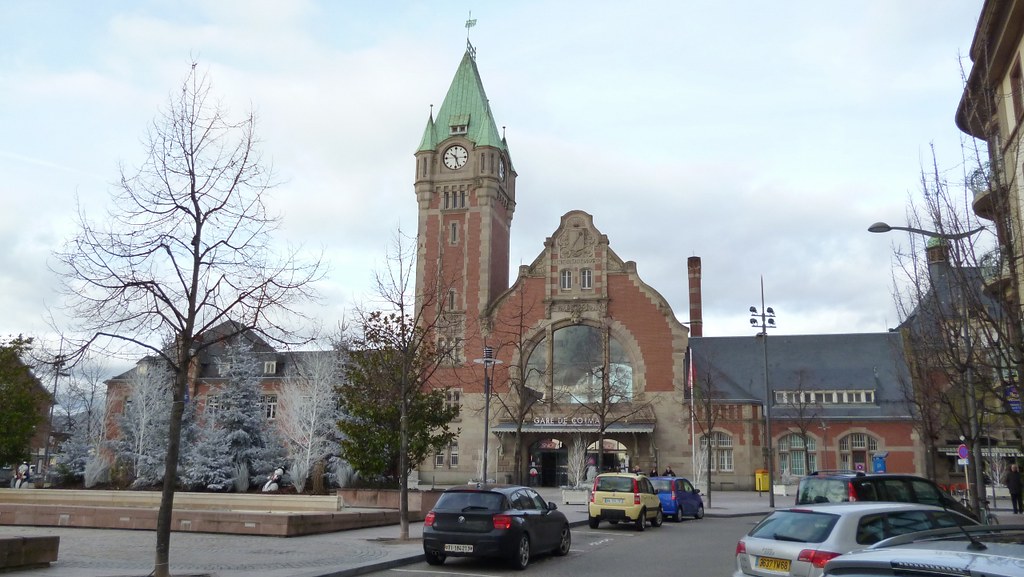 Between 1870 and 1914, when Alsace was occupied by Germany, a talented artist, Jean-Jacques Waltz, better known as Hansi, stimulated the town’s passive resistance to German influence and kept alive the traditional image of Alsace with his humourist drawings of good-natured villagers in regional costume.
Between 1870 and 1914, when Alsace was occupied by Germany, a talented artist, Jean-Jacques Waltz, better known as Hansi, stimulated the town’s passive resistance to German influence and kept alive the traditional image of Alsace with his humourist drawings of good-natured villagers in regional costume.  Along the rue des Clefs is the Hotel de Ville. It is an 18th century building which belonged to the Abbaye de Paris.
Along the rue des Clefs is the Hotel de Ville. It is an 18th century building which belonged to the Abbaye de Paris.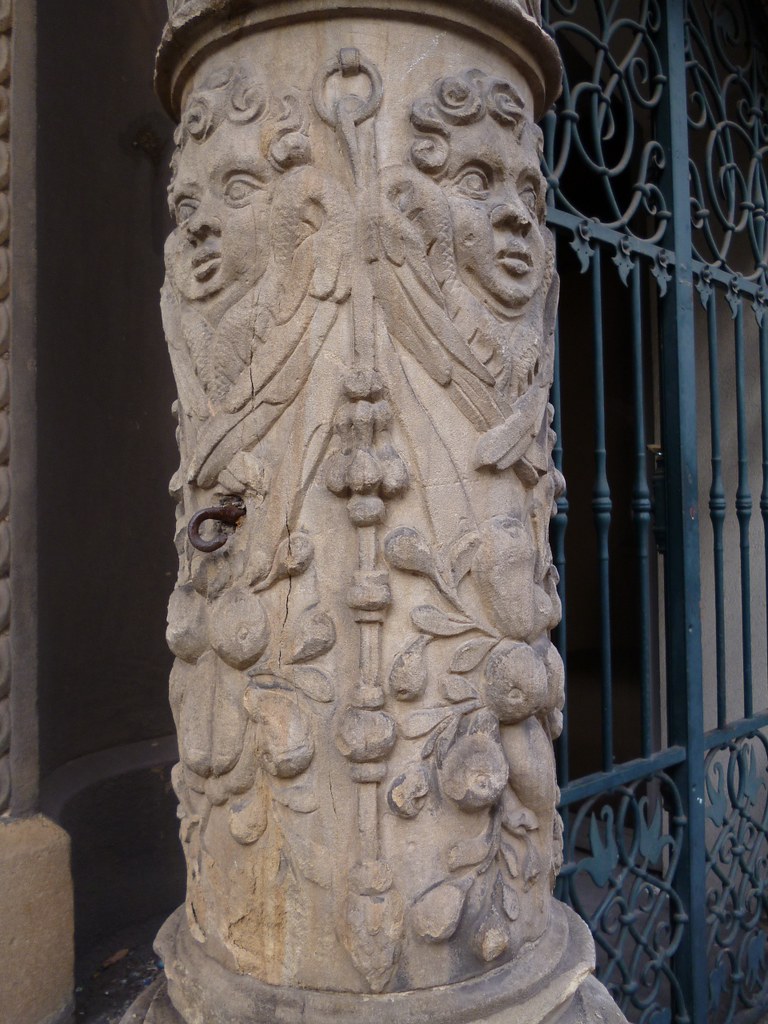
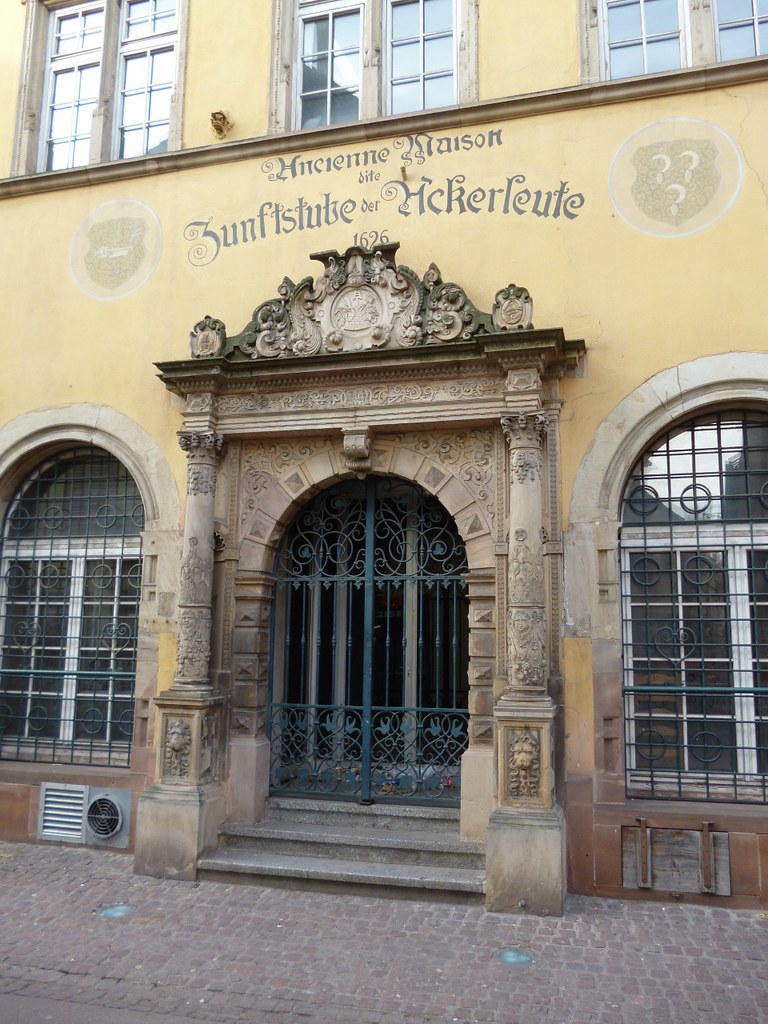 Down the street is an interesting building called the Ancienne Maison de la Chambre de la corporation des Laboureurs. It is an old guild hall for farmers.
Down the street is an interesting building called the Ancienne Maison de la Chambre de la corporation des Laboureurs. It is an old guild hall for farmers. 
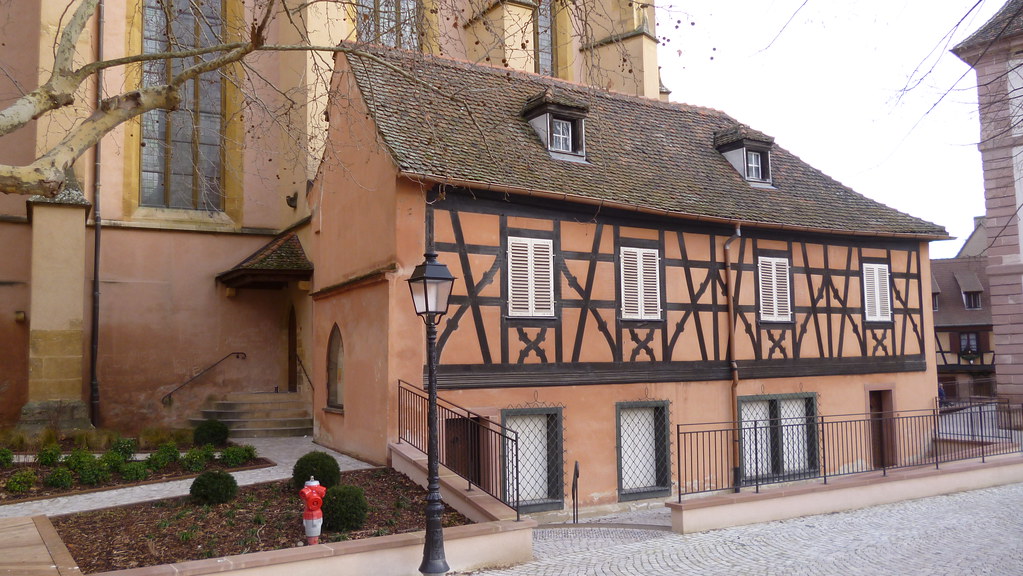 This is the Temple protestant St-Matthieu, a former Franciscan church decorated with fine 14th and 15th century stained glass windows.
This is the Temple protestant St-Matthieu, a former Franciscan church decorated with fine 14th and 15th century stained glass windows. 
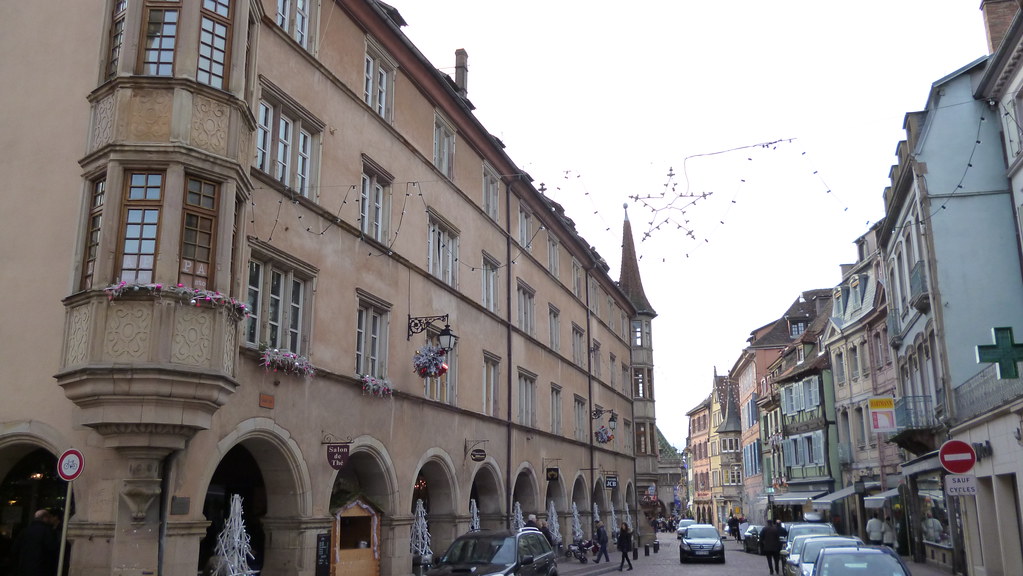 Along the Grand’ Rue is the Renaissance Maison des Arcades, framed by two octagonal turrets and the Schwendi Fountain (one of statues and fountains in town by Bartholdi).
Along the Grand’ Rue is the Renaissance Maison des Arcades, framed by two octagonal turrets and the Schwendi Fountain (one of statues and fountains in town by Bartholdi). 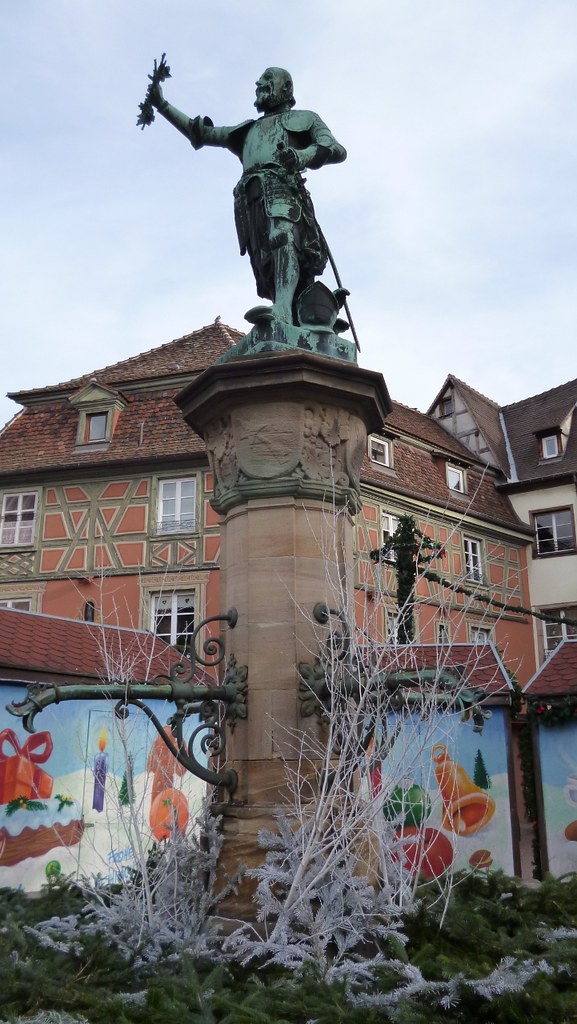
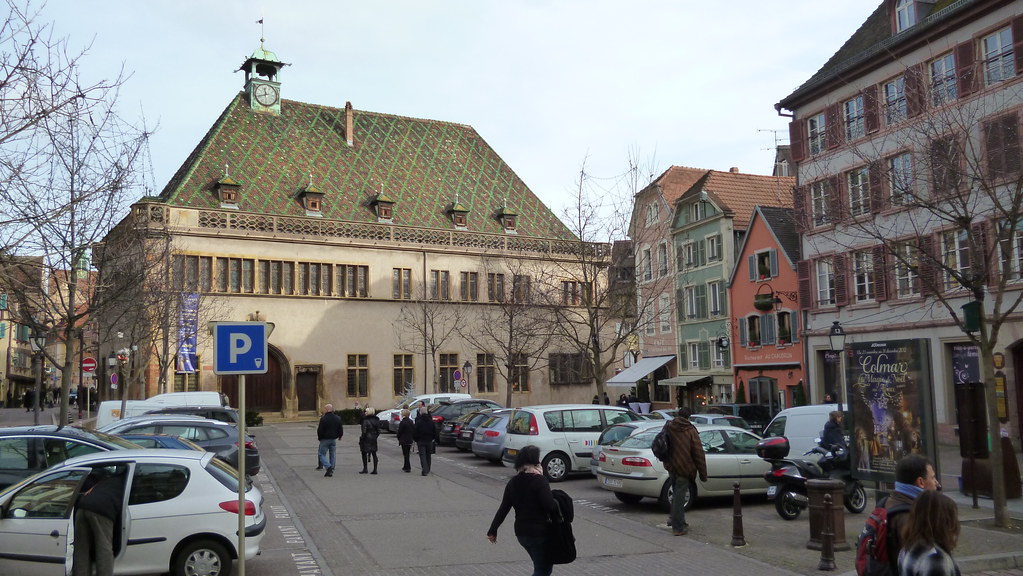 The former customs house, or Koifhus is the most important civilian edifice in Colmar. The main building is from 1480 and its ground floor was used as a warehouse to stock goods subject to municipal tax.
The former customs house, or Koifhus is the most important civilian edifice in Colmar. The main building is from 1480 and its ground floor was used as a warehouse to stock goods subject to municipal tax. 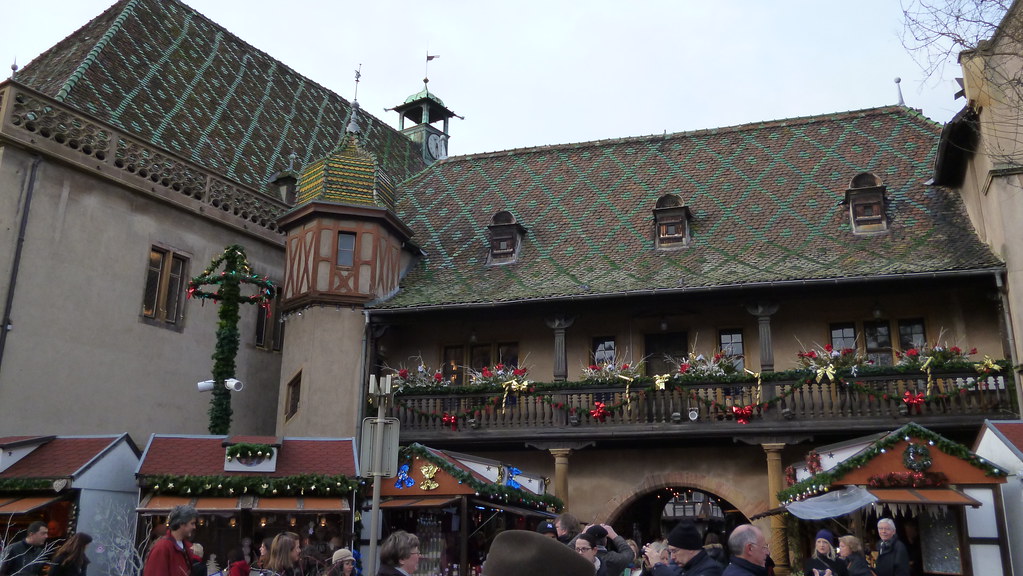 The great hall on the first floor, known as the Salle de la Décapole was the meeting place for representatives of ten Alsatian cities. In the late 16th century, a second building was added. This is attractively decorated with a wooden gallery and flanked by a stair turret with canted corners; on the ground floor, three arches underline the opening and form a passage.
The great hall on the first floor, known as the Salle de la Décapole was the meeting place for representatives of ten Alsatian cities. In the late 16th century, a second building was added. This is attractively decorated with a wooden gallery and flanked by a stair turret with canted corners; on the ground floor, three arches underline the opening and form a passage. 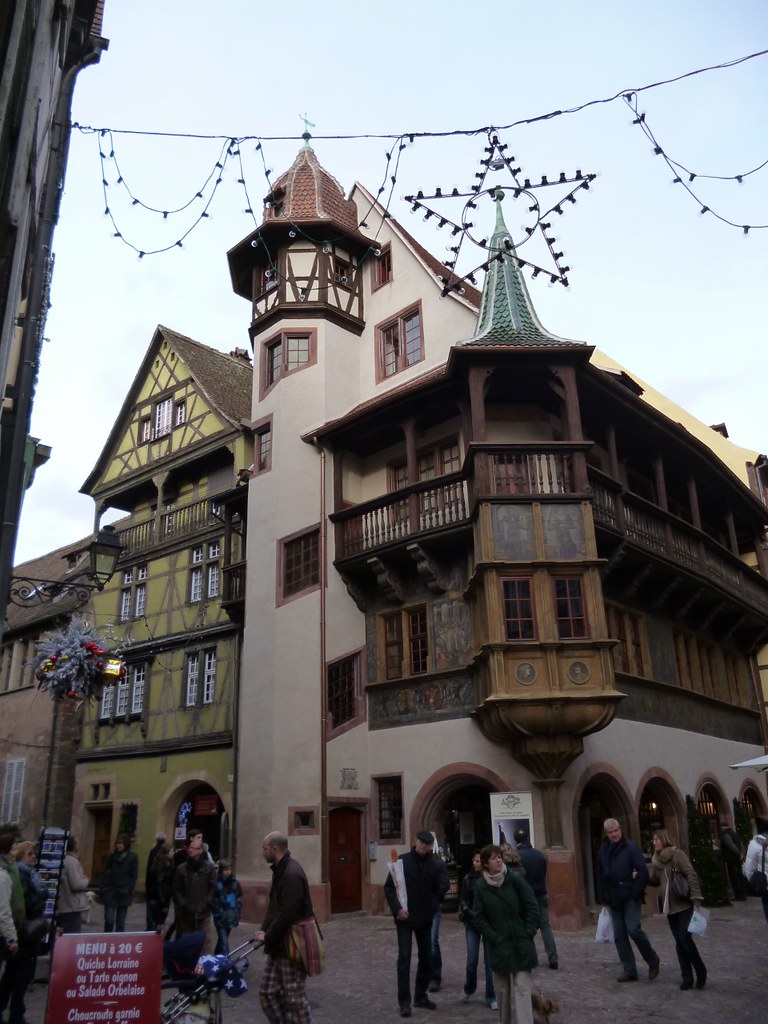 Opposite the customs house along rue des Marchands is the Maison Pfister. A hatter from Besancon had this lovely house built in 1537 and decorated with frescoes and medallions. The arcaded ground floor is surmounted by an elegant wooden gallery.
Opposite the customs house along rue des Marchands is the Maison Pfister. A hatter from Besancon had this lovely house built in 1537 and decorated with frescoes and medallions. The arcaded ground floor is surmounted by an elegant wooden gallery.  Next to the Maison Pfister, at no 9, stands a fine house (1609) adorned with a wooden gallery and a corner sculpted figure representing a merchant.
Next to the Maison Pfister, at no 9, stands a fine house (1609) adorned with a wooden gallery and a corner sculpted figure representing a merchant.  On the left of rue des Marchands, the 15th century Maison Schongauer, also known as Maison de la Viole, is where Schongauer reputedly lived from 1477 to 1490.
On the left of rue des Marchands, the 15th century Maison Schongauer, also known as Maison de la Viole, is where Schongauer reputedly lived from 1477 to 1490. 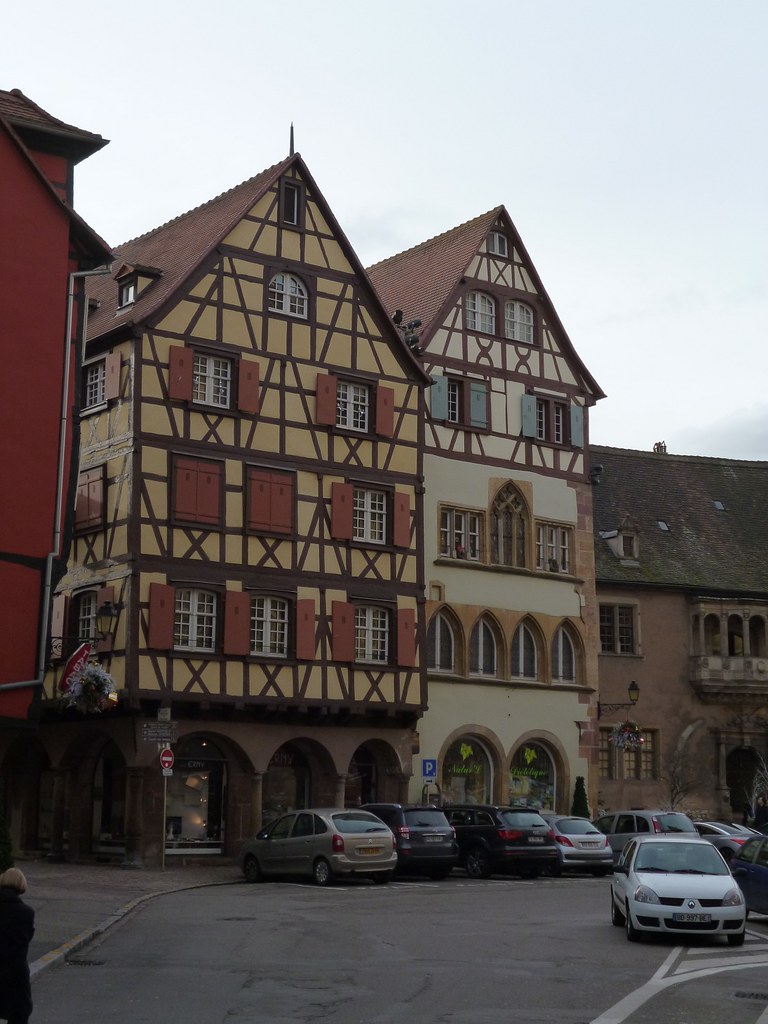 On the square of the Place de la Cathedral stands the oldest house in Colmar, Maison Adolphe (1350), and the Ancien Corps de Garde (1575).
On the square of the Place de la Cathedral stands the oldest house in Colmar, Maison Adolphe (1350), and the Ancien Corps de Garde (1575). 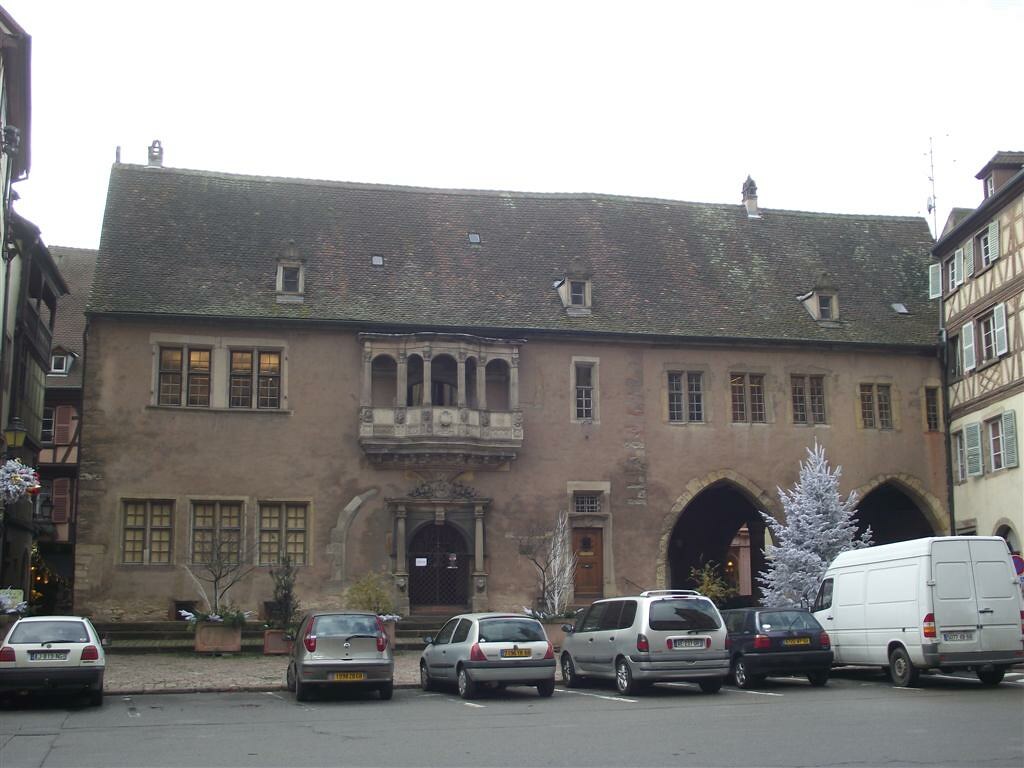 The town’s magistrate was sworn in on this lovely Renaissance loggia.
The town’s magistrate was sworn in on this lovely Renaissance loggia.  Opposite the guardhouse stands the collegiate church of St-Martin, known as the cathedral. This imposing edifice decorated with glazed tiles and red-sandstone projections was built in the 13th and 14th centuries on the site of a Romanesque church.
Opposite the guardhouse stands the collegiate church of St-Martin, known as the cathedral. This imposing edifice decorated with glazed tiles and red-sandstone projections was built in the 13th and 14th centuries on the site of a Romanesque church. 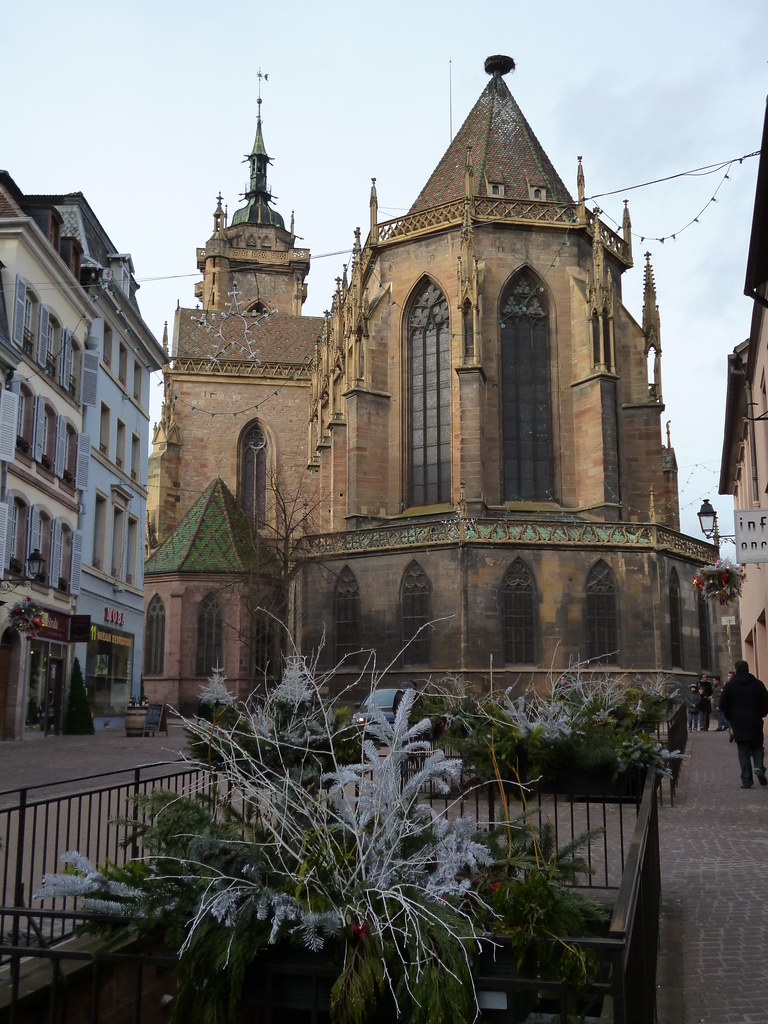
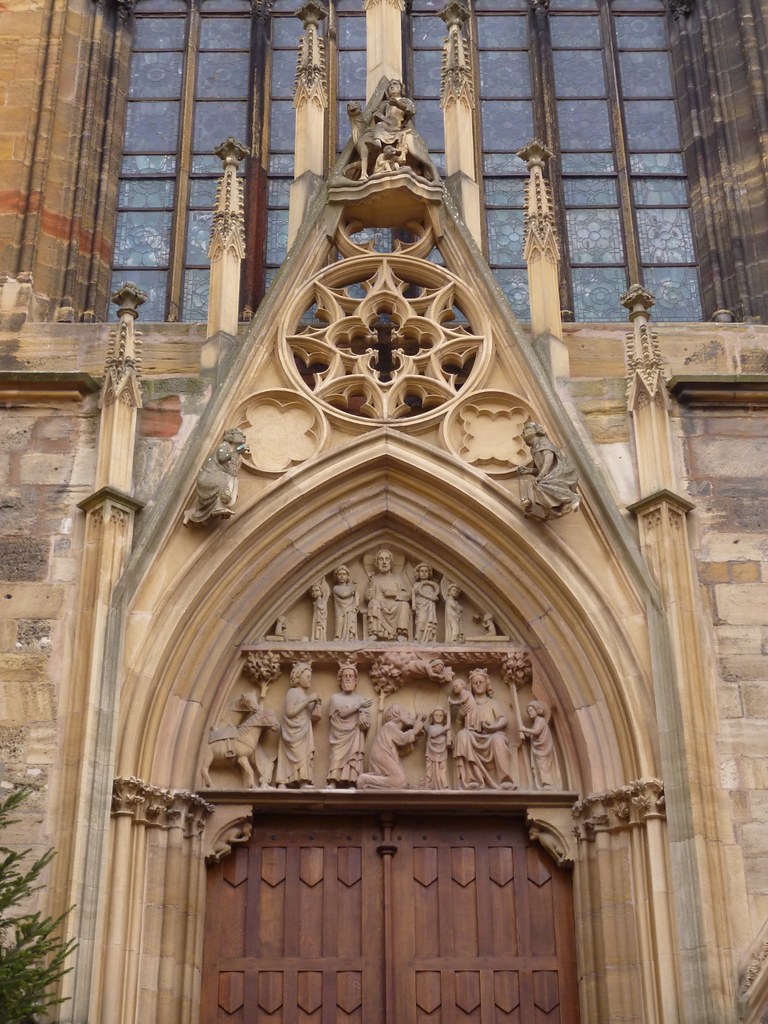
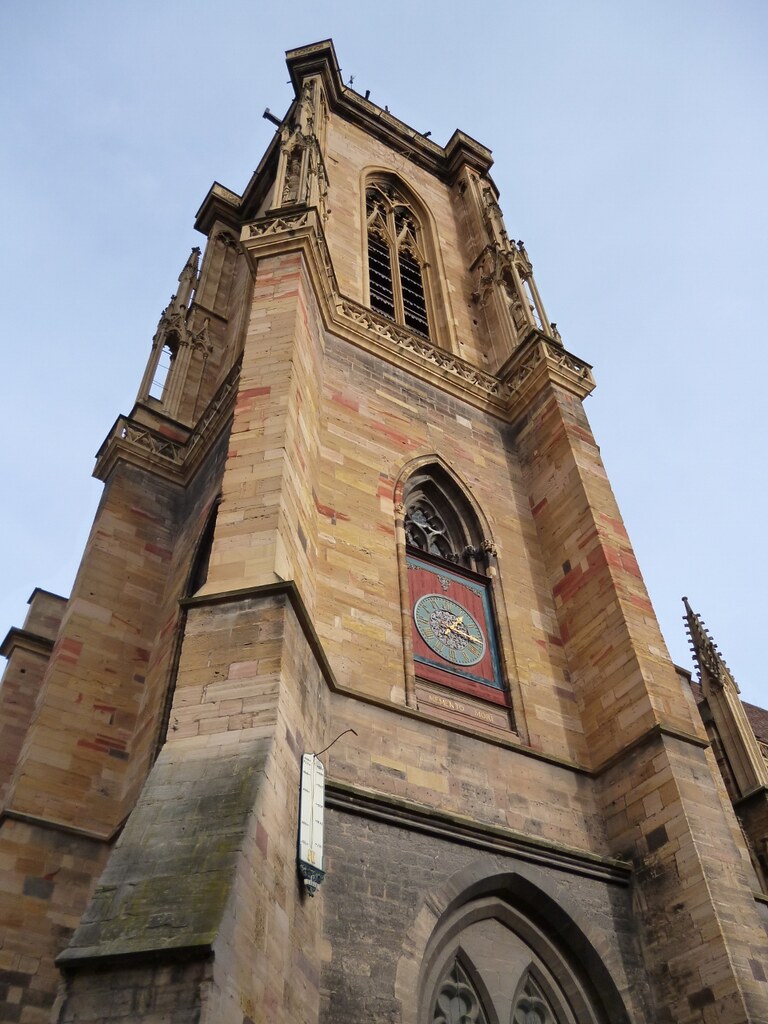 The west doorway is flanked by two towers. The south tower is decorated with a sundial bearing the inscription Memento Mori (think of death).
The west doorway is flanked by two towers. The south tower is decorated with a sundial bearing the inscription Memento Mori (think of death). 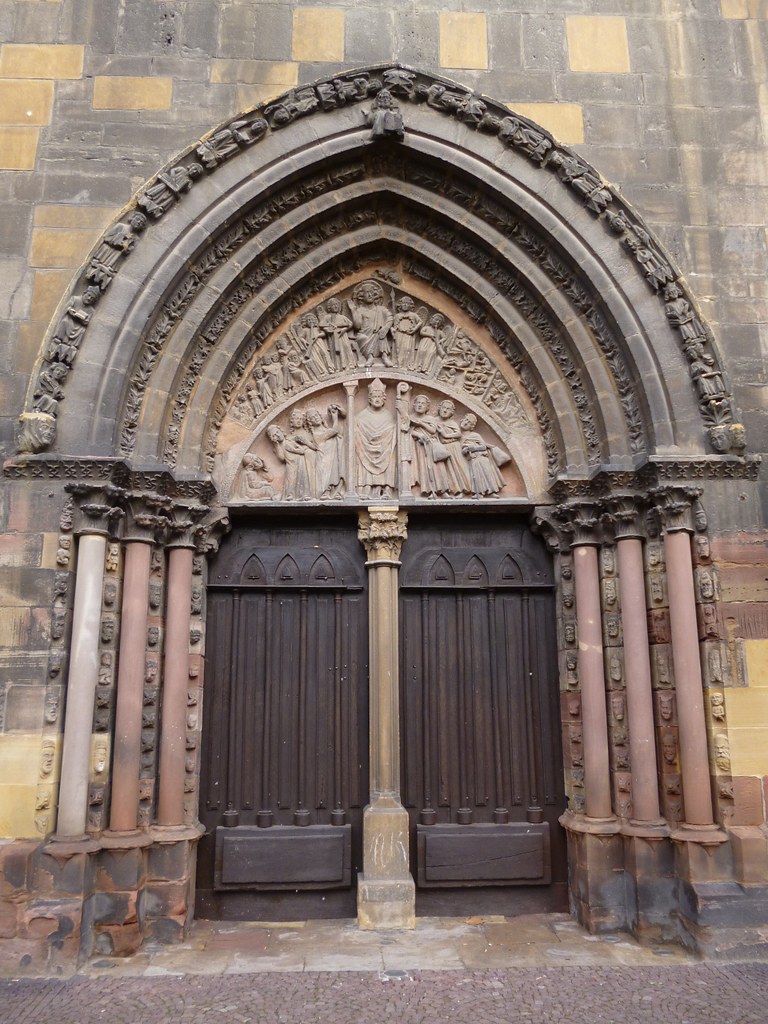 The St-Nicholas doorway, which gives access to the south transept, is decorated with a beautiful tympanum. Inside is a beautiful organ loft by Silbermann.
The St-Nicholas doorway, which gives access to the south transept, is decorated with a beautiful tympanum. Inside is a beautiful organ loft by Silbermann. 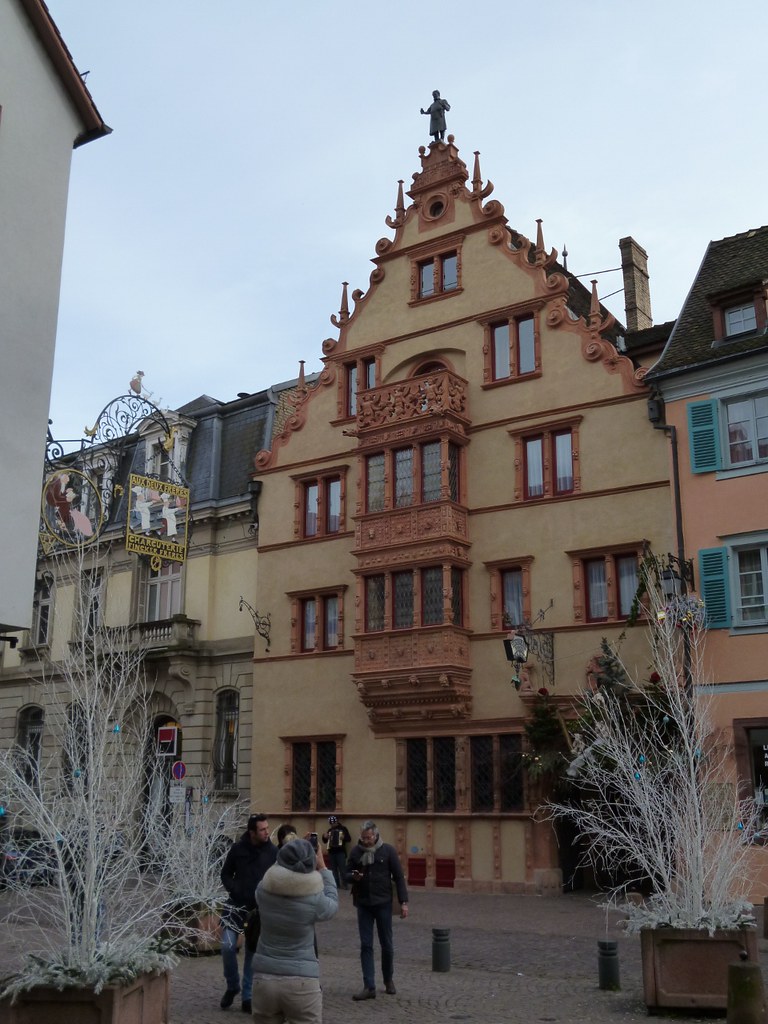 The fine Renaissance Maison des Têtes owes its name to the numberous carved heads decorating the façade.
The fine Renaissance Maison des Têtes owes its name to the numberous carved heads decorating the façade. 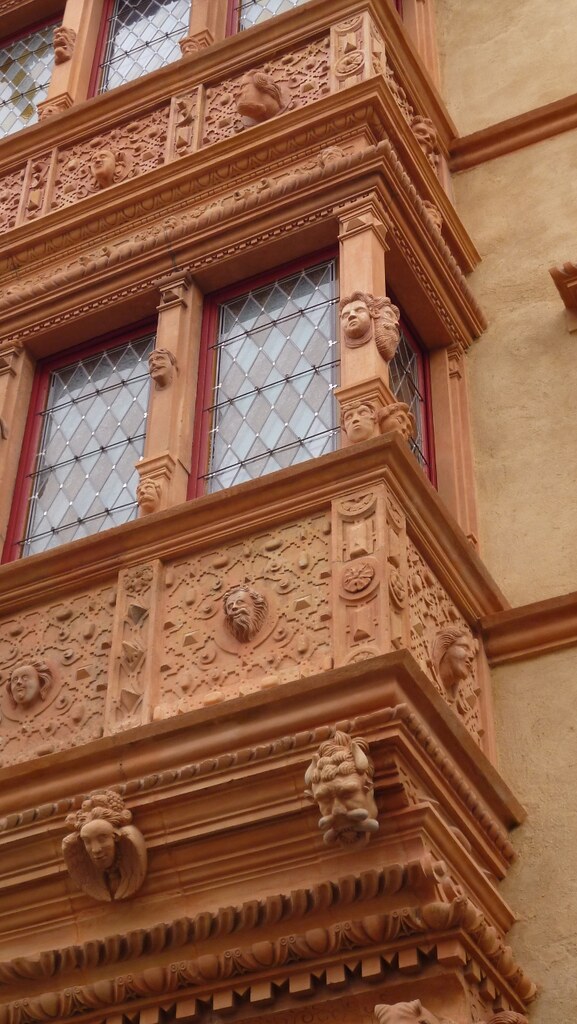 The graceful gable is underlined by rows of scrolls; oriel windows complete the ornamentation.
The graceful gable is underlined by rows of scrolls; oriel windows complete the ornamentation. 
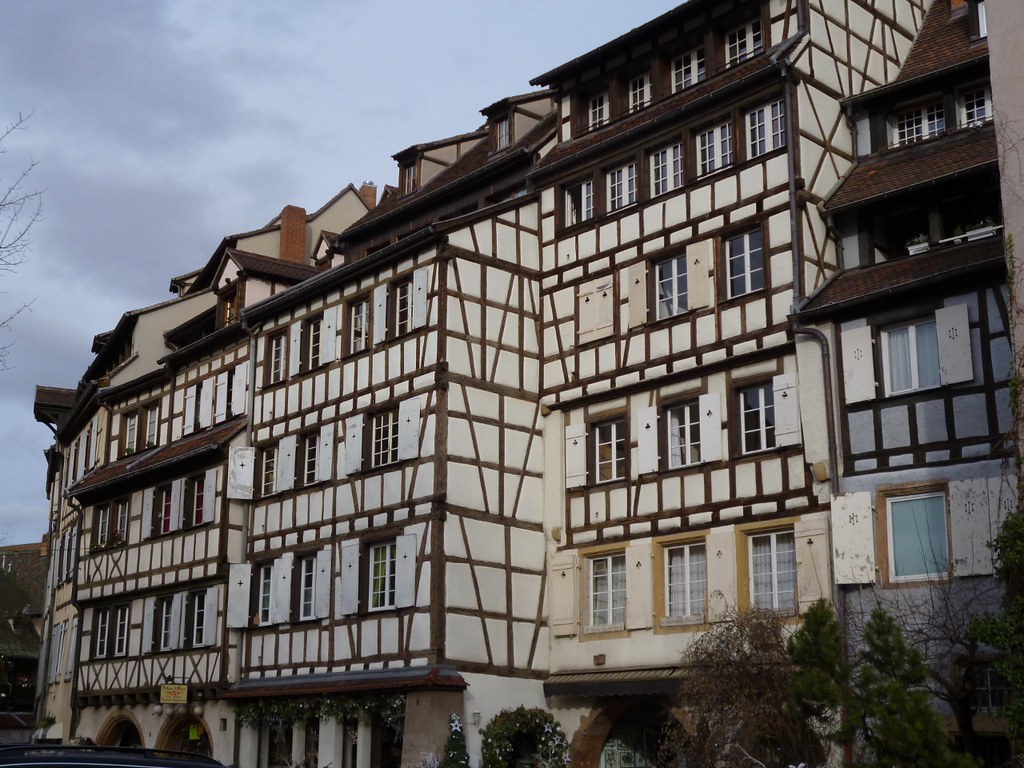 Another part of Colmar that is quite popular is the ancient tanners’ district known as Petite Venice. It is named for its inhabitants who used the river to tan and wash hides. Timber-framed houses were narrow but high, creating lofts to dry the skins.
Another part of Colmar that is quite popular is the ancient tanners’ district known as Petite Venice. It is named for its inhabitants who used the river to tan and wash hides. Timber-framed houses were narrow but high, creating lofts to dry the skins. 
 Crossing the River Lauch one enters the Krutenau district, once a fortified outlying area; this district’s has a beautiful covered market where farmers and fishermen would gather to sell their wares after arriving on flat-bottomed boats.
Crossing the River Lauch one enters the Krutenau district, once a fortified outlying area; this district’s has a beautiful covered market where farmers and fishermen would gather to sell their wares after arriving on flat-bottomed boats. 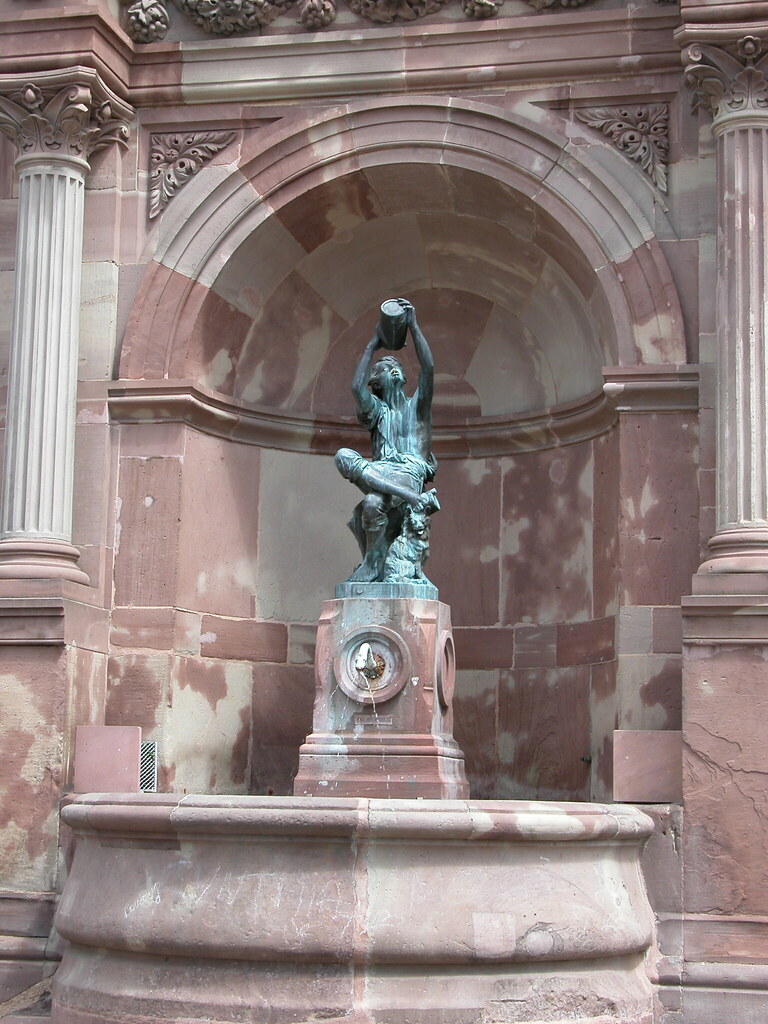 At the corner of rue des Écoles and rue du Vigneron is Bartholdi’s Fountaine du Vigneron, a celebration of Alsatian wines.
At the corner of rue des Écoles and rue du Vigneron is Bartholdi’s Fountaine du Vigneron, a celebration of Alsatian wines. 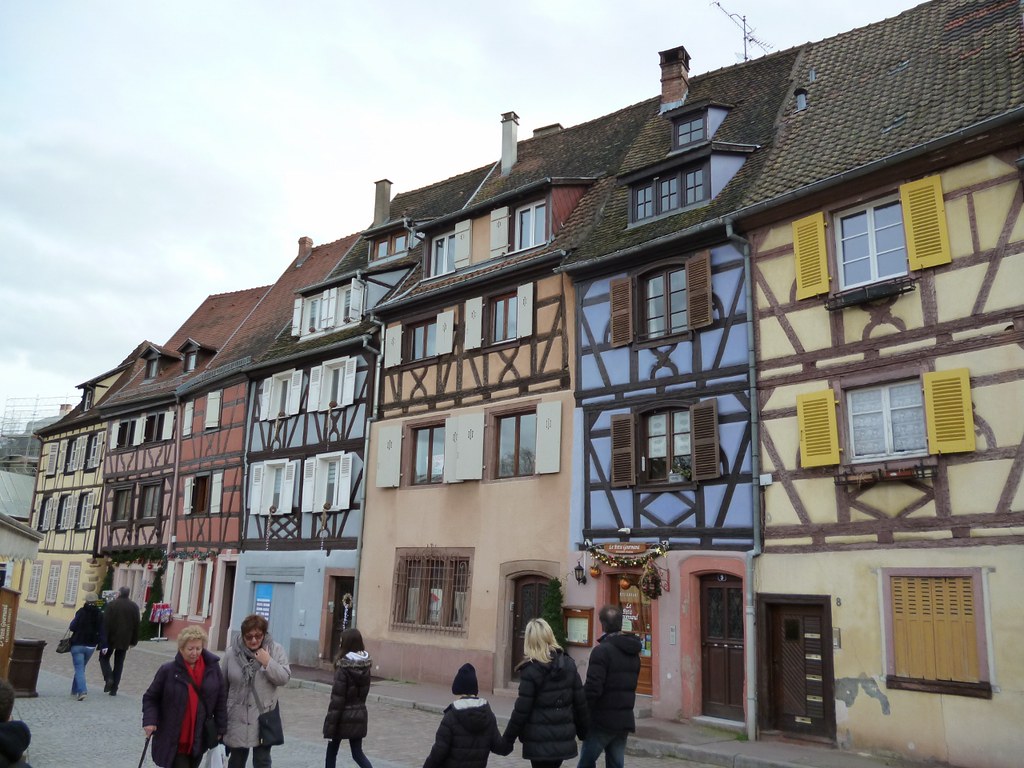
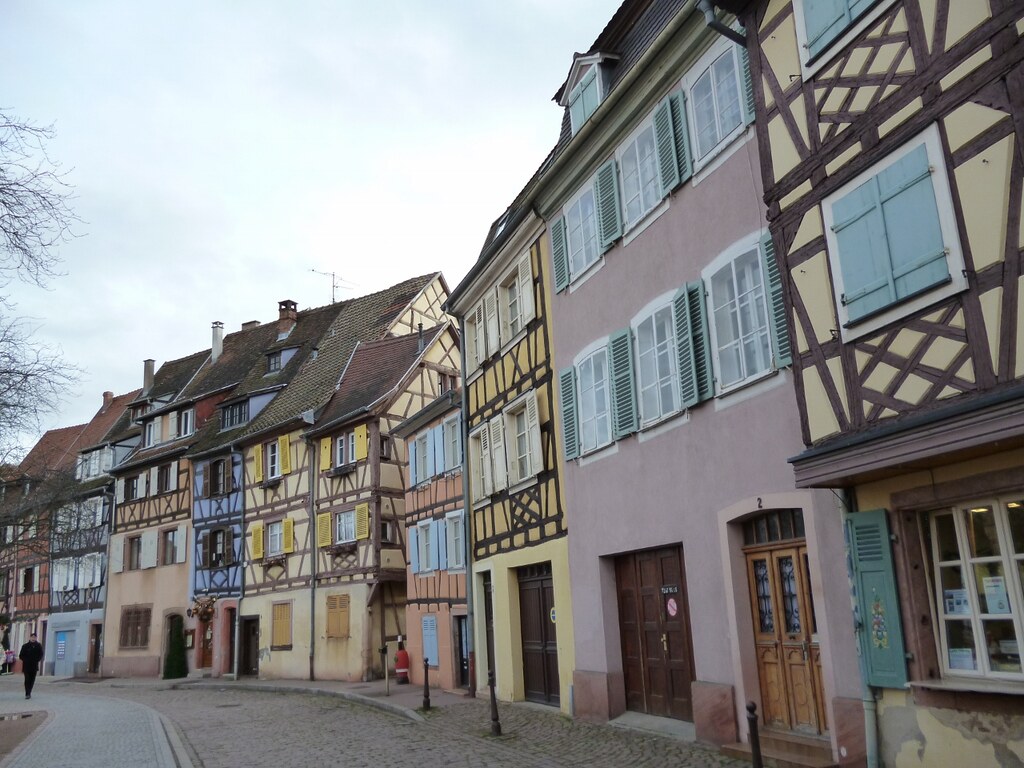
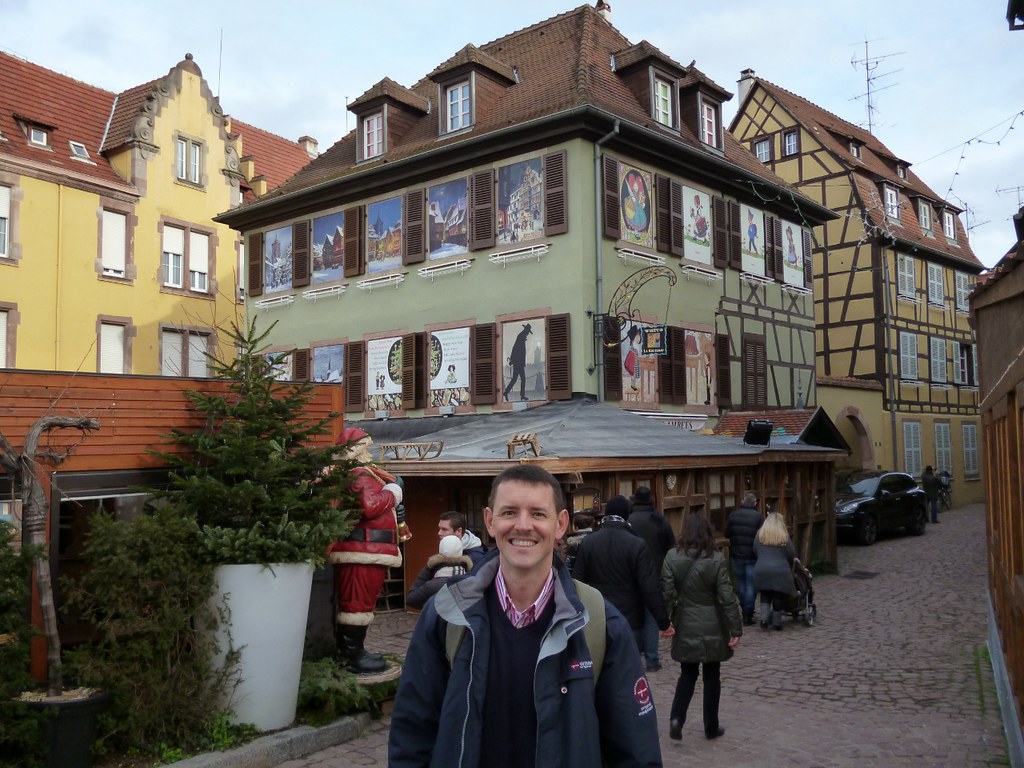
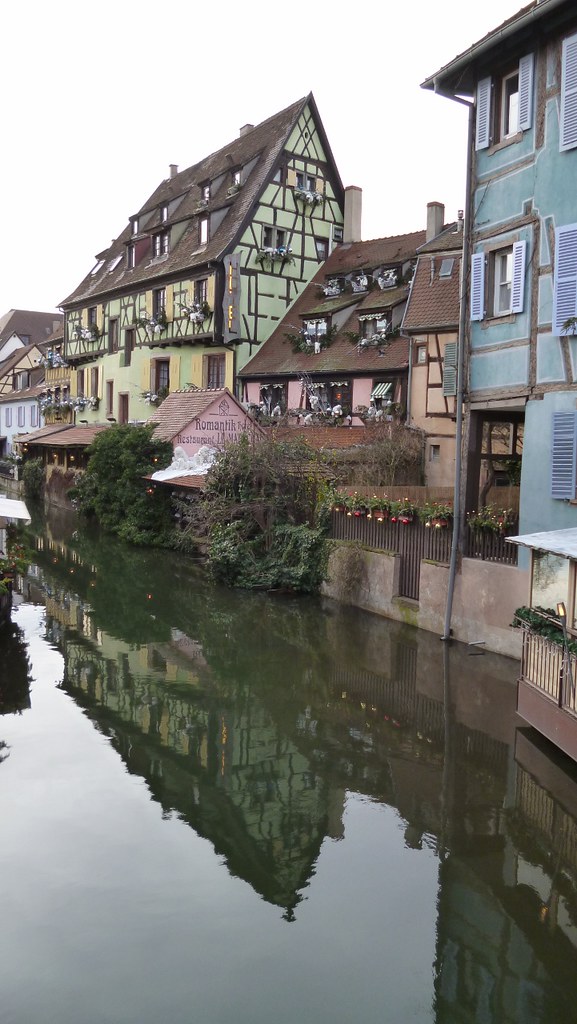 The quai along the river is lined with colourful and picturesque fishermen’s cottages.
The quai along the river is lined with colourful and picturesque fishermen’s cottages. 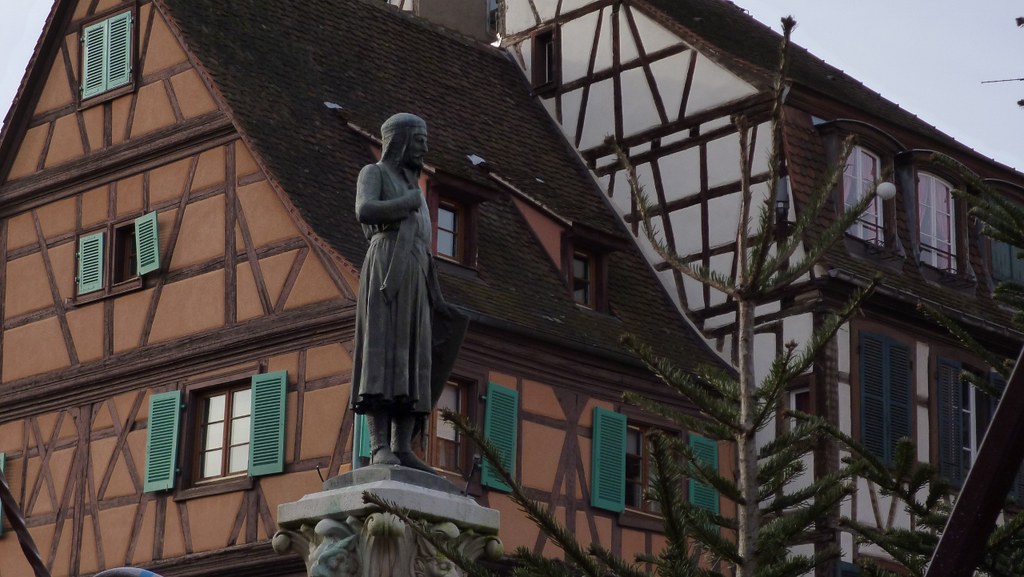 In the Place des Six-Montagnes-Noires is Bartholdi’s Fontaine Roesselmann, dedicated to the town’s hero St-Bernard de Clairvaux...(so why in the world is it called the Roesselmann Fountain ?)
In the Place des Six-Montagnes-Noires is Bartholdi’s Fontaine Roesselmann, dedicated to the town’s hero St-Bernard de Clairvaux...(so why in the world is it called the Roesselmann Fountain ?) 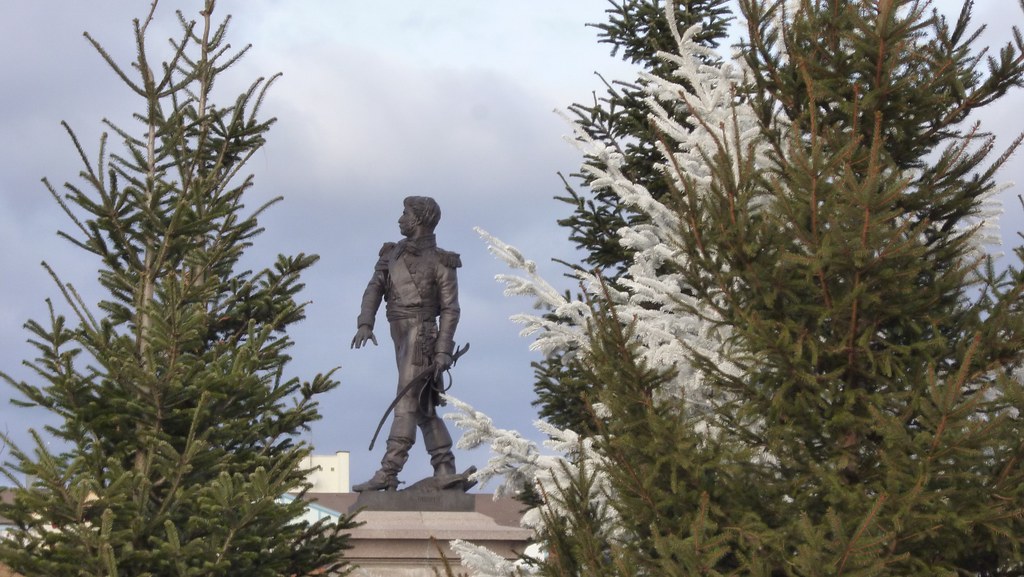 Other Bartholdi creations include the Monument to General Rapp as well as the Bruat Fountain in the center of Place du Champs de Mars.
Other Bartholdi creations include the Monument to General Rapp as well as the Bruat Fountain in the center of Place du Champs de Mars.


